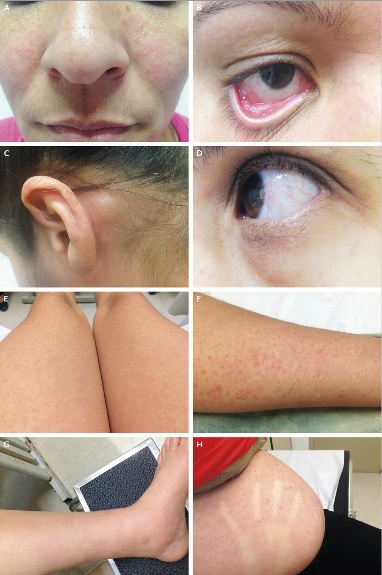It started with a headache, followed by a rash along his hands and arms, and then all over his body. His eyes were bloodshot, he was lethargic and by Day 3, he felt “burning pain” on his feet.

In February, a 44-year-old U.S. man returned from a six-day vacation in Puerto Rico where he contracted Zika virus. In a new case study, New York scientists outline the symptoms he encountered in hopes that his story will help other medical professionals identify the tell-tale symptoms of the illness.
It only took three days for a headache and tiredness to kick in, according to the New York doctors who documented his case in the Journal of the American Medical Association.
READ MORE: Here’s what Zika virus symptoms look like in pregnant women
He had conjunctivitis, which is when eyes are red or pink, sticky and runny.
A day later, a rash “eruption” covered his arms, hands and palms. “Over the course of the next 24 hours, the eruption became more apparent…” as it spread, the doctors reported.
“On Day 3, the patient noted the eruption to be most pronounced on the knees and feet, and he described burning pain of the feet,” they wrote.
- Health task force blasted over ‘dangerous guidance’ for cancer screenings
- Dentists hesitant to sign up for federal dental plan; seniors advised to look at all options
- David Chang’s Momofuku to stop ‘chile crunch’ trademark battle after outcry
- Over 25% of young Canadian deaths linked to opioids amid pandemic: study


He felt searing pain in his wrists, knees and ankles by Day 4.
Itching wasn’t a “major feature,” though. He didn’t have to deal with a fever, cough, sore throat, diarrhea, nausea or vomiting either.
The virus wasn’t detected in a blood test, but it was picked up in urine.
By Day 8, the illness had run its course.
READ MORE: What doctors know about how Zika virus potentially spreads
New research about Zika virus and how it presents in humans is quickly being recorded in literature. In a case study released in March, Brazilian doctors offered a glimpse at how the mosquito-borne virus was manifesting in pregnant women.
In that case, there were common trends: a rash and itchy skin was incredibly common, followed by conjunctivitis.
The women also reported arthralgia, or joint pain and lymphaldenopathy, which is a swelling in the lymph nodes or glands. They look bean-shaped and could appear in the neck, chest, abdomen or under the arms as fluid builds up in the lymph nodes while the body fights disease.

Some women reported a fever, while about one in five also had nausea or vomiting.
READ MORE: What pregnant women need to know about Zika virus and travel
The world’s largest Zika virus outbreak has been contained to Brazil with cases scattered across Latin America and the Caribbean, but now health officials are warning the virus is migrating to Europe and parts of the United States.
In North America, they’re projecting that most of Texas and all of Florida are “highly suitable” for Zika virus transmission.
Like dengue, West Nile and yellow fever, Zika virus is a mosquito-borne tropical disease, meaning the insects transmit the disease to humans.
READ MORE: 5 things Canadians need to know about Zika virus
You can catch Zika virus by getting bitten by an infected mosquito, but scientists are working quickly to study transmission through contaminated blood, sexual intercourse and from expectant mom to baby.
carmen.chai@globalnews.ca
Follow @Carmen_Chai




Comments